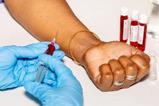Real, appreciable improvements to patient care need a more patient-focused model of care that helps address capacity challenges and transforms both patient experience and outcomes, says Peter Harrison
![]()
This is paid-for content from our commercial partners. Find out more

Sponsored by 
For the UK NHS, crisis management has become business as usual. Surging demand and tightening resources have sent waiting times rocketing, degrading health outcomes and impacting the patient experience. Indeed, in January, NHS England posted its worst accident and emergency waiting times since the four-hour target was introduced in 2004.
These challenges are putting an unprecedented strain on NHS services. Much of the recent political debate has been focused on funding and personnel. Yet, while this may help shore up existing services, it won’t solve the problem alone. Shifting demographics and the uncertainty of the times simply aren’t on the health service’s side.
If agencies seek to make real, appreciable improvements to patient care – to thrive and not just survive – they should seriously consider a more patient-focused model of care that helps address capacity challenges and transforms both patient experience and outcomes.
A crisis waiting to happen
In the last decade or so, waiting times have become a perennial challenge for the health service. This is down to a host of logistical and financial challenges, but we’re in danger of normalising a problem that is having severe health consequences for the UK population.
Recent research from Siemens Healthineers shows that three in five patients are frustrated by having to wait for a medical appointment, either at their GP or hospital. The 2019 GP patient survey suggested that continuity of care is also an issue – less than half of patients who have a preferred GP said they saw them always, almost always, or a lot of the time. According to the Siemens Healthineers research, 55 per cent are regularly annoyed by long waiting times for diagnoses and a similar amount (52 per cent) face long delays waiting for the actual medical treatment following diagnosis.
Current diagnostic pathways are too frequently dysfunctional. The process often involves a protracted sequence of handoffs between different service providers, with the patient often feeling helpless and blind to the process and progress. This can very often be the case when a patient has received diagnostic tests. Whether laboratory tests or imaging tests, the tests often require expert analysis prior to the results being forwarded to the clinician that ordered the tests. This can take an extended period of time during which the patient may be left anxious and is typically unsure of any progress, and unable to expedite themselves.
Frustration has become common for NHS patients, but the consequences run much deeper. This could well be putting people off engaging in the first place and potentially have a huge long-term negative impact on the health of the population.
There’s evidence that this aversion to seeking medical help is already happening. Siemens Healthineers research shows that a fifth of patients (21 per cent) have admitted they would likely miss treatment due to the time needed to get an appointment. Even more serious, 40 per cent would rather wait until their symptoms had become unbearable rather than go through the hassle of getting an appointment.
The NHS must take back control of the situation and deliver a service that people want to interact with, or risk the problem escalating further as health levels decline.
Putting care in the community
It’s time to embrace an alternative approach. People are eager for more convenient, lower hassle options rather than long hospital waits. Almost half (42 per cent) of patients say having easier access to appointments would make them more likely to get screened, and a quarter also said they would be more likely to get an appointment if medical centres were closer to their homes and workplaces.
Clearly there is a desire to engage in treatment without a patient necessarily needing to go to their local hospital, especially as home visits become less available.
Fortunately, the technology needed for more localised screening can be brought to patients through community diagnostics centres. These are smaller, more localised centres of expertise and equipment built to support existing health infrastructure, giving patients more choice and convenience when they need help.
For many with health and accessibility issues, attending a diagnostic centre in the community is a convenient alternative to going to hospital for an appointment. Furthermore, if their local trust is at capacity it also means the patient can be diagnosed without delay, while simultaneously taking the pressure off their local hospital services. Such centres could provide a “one stop shop” of diagnostic services covering a range of tests from blood/urine testing through to imaging, including; MR, CT, X-ray and Ultrasound. Ideally the centre would account for the testing process from start to finish, with results either available during one visit, or within an accelerated timescale, and afford the patient (or carers) full transparency of the progress of results reporting.
Such centres could address capacity and access issues, delivering improved health outcomes. By facilitating health screening and earlier diagnosis, we can improve the health of the nation. This is exemplified in the case of prostate cancer, where one year survival rates are around 100 per cent if detected in stages 1-3, falling to 87.6 per cent if detected in stage 4.
We know funding provision must improve, and it appears the entire political landscape is aligned on this point. But let’s also look to transform health services and experiences to more appropriately suit the needs of the patient. Community diagnostics provide easier more local access to screening and diagnostic services, resulting in a more transparent and improved patient experience that people can trust.
For more insight into the UK’s attitudes and perceptions of the current healthcare system and how community diagnostics can help, click here






























